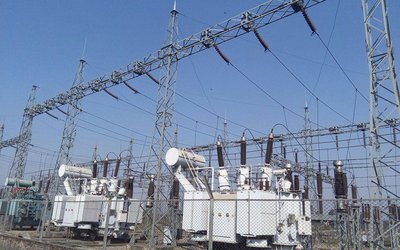
One of the highlights of Indian prime minister Manmohan Singh's May-end visit to Japan was the reiteration of bilateral cooperation in the large infrastructure projects.
Singh and his Japanese counterpart, Shinjo Abe, confirmed that the two countries would work together to undertake an industrial corridor project linking the Indian capital with the South Asian nation's financial hub, Mumbai.
The visit of Singh, his fifth as prime minister, served as an opportunity for the two countries "to confirm their commitment to strengthening political and security cooperation further and produced many concrete outcomes in the economic field, including the DMIC, a high-speed railway system in India, and yen loans for Mumbai Metro," said a Japanese foreign ministry statement.
The Delhi-Mumbai Industrial Corridor (DMIC) is an ambitious project that is expected to help transform the economy.
The mega project is aimed at giving a major boost to the Indian economy. It has come at a time when the burgeoning economy has slowed somewhat after years of stupendous performance.
Six States
Initiated seven years ago as an advanced industrial development concept, the DMIC envisages the development of industrial and infrastructure sectors in six states of India.
Linking Delhi with Mumbai, it will cover the national capital territory (NCR) of New Delhi, the most populous state Uttar Pradesh, fast emerging industrial and commercial states of Gujarat and Maharashtra, major agricultural power Haryana and the historic Rajasthan.
The idea of the 90 billion dollar project is to simultaneously develop large scale industries and infrastructure facilities in the six states. The planned infrastructure facilities along the 1500km corridor include airports, railways, sea ports and power projects.
Given the huge importance of the project, it was no surprise that it was top on prime minister Manmohan Singh's agenda during his last visit to Japan two months ago. Singh had another pressing concern at home waiting to be addressed. There have been persistent concerns which have only grown by the day that the impressive economic growth in recent years has not been matched by equal distribution and social justice.
The authorities expect the DMIC to address this concern. They believe that once complete the DMIC will go a long in improving the socio-economic conditions of the millions in the region and beyond. How this concern is addressed will however be keenly watched in many quarters as questions mount on whether the much-touted Rising India has resonated across the vast impoverished regions across the country.
Nepal 'Corridor'
Nepal is miles behind its fast emerging neighbour. But that does not stop it from nursing a dream of such a corridor project. In fact, it has the advantage of learning from the experiences of the two countries which have been invaluable partners in its development.
Although multi-billion dollar mega project such as DMIC is a distant dream for a resource-poor country with an annual national budget of little over 4 billion dollars, it can benefit from the concept to give a new lease of life to the struggling industrial sector.
The idea is worth giving a serious consideration especially in the plains along the border with India. Once the DMIC is completed, the scope of the replication of the Japan-India cooperation however on a much smaller scale may well be worth giving a look. To start with, an industrial corridor along the DMIC model can be ideated between the major centres like Birgunj, Janakpur, Bhairahawa and Biratnagar south of the country and Kathmandu and Pokhara up north.
The Nepalese authorities would do well to keep their eyes open on the potential of such an initiative with the cooperation of two of its major donors. It could help transform the lot of the millions living in the impoverished villages across Nepal even as a strong foundation for the vital industrial development is built in the predominantly agricultural country.
- Ukrainian Crisis And The World (Dis)Order
- Apr 22, 2022
- China’s Cautious Steps In The Graveyard Of Empires
- Aug 18, 2021
- Foreign Aid On The Fence!
- Aug 08, 2021
- Communist Party of China centenary celebrations Reading between the lips
- Jul 14, 2021
- Second Wave Of Covid-19 In India: Deadly Blow To The Economy
- Jun 23, 2021

















